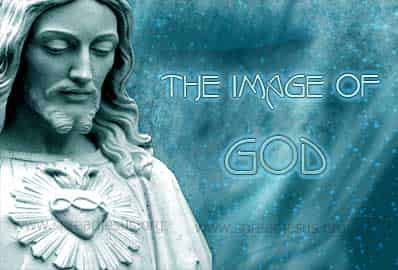The Image Of God
- 28-Dec-2023, 19:32
- 24 305


The Greek word eikon, meaning “image,” is twice used in titles of Christ to express His unique relation to God. The word itself denotes an image and involves the two ideas of representation and manifestation. When Paul affirmed that Jesus is “the image of God” (II Corinthians 4:4), he meant Jesus was essentially and absolutely the perfect representation and manifestation or expression of the Father. In another place Paul altered the title slightly by calling Christ “the image of the invisible God” (Colossians 1:15). It emphasizes that Christ is the visible representation and manifestation of God to created beings. Both contexts convey the idea of perfection in that image. A second closely related title is “the express image of his person” (Hebrews 1:3). This is one of seven such statements in the early verses of Hebrews-all designed to demonstrate the superiority of Christ. Various versions translate it in different ways: “the very image of his substance” (ASV), “an exact representation of his very being” (Rhm), “flawless expression of the nature of God” (Phillips), “stamped with God's own character” (Moffat), “the copy of his being” (Beck), “the exact representation of God's nature” (Swindoll), “the exact expression of God's nature” (Stibbs), “the impress of the Divine Nature” (F.B. Meyer), and “the exact expression of God's very essence” (Barclay). This wide assortment of translations derives from two key Greek words in this title. The, first of these is the word character, which is closely related to the verb charasso, meaning “to cut, to scratch, or to mark.” Originally this word referred to a marking agent, such as a die, and then later to the impression made by the marking agent. It is similar to the English word “stamp,” which first referred to the instrument which printed the impression and later to the impression itself. It suggests the idea of an exact representation of the person or the person himself-that is, the distinguishing features or traits by which a person or thing is known (cf. the English word “characteristics”). What the writer of the Hebrews seems to argue by using this title is that as the wax bears the impression of the seal pressed upon it, revealing all the dominant character traits of that seal, even so Jesus Christ bears the impression of God's essential being, revealing all the attributes of God. The second word in this title is hypostasis, which is more of a philosophical than a theological term. Etymologically, it refers to the sediment or foundation under, a building but came to be used by Greek philosophers to refer to the essence or real being of a person thought to rest under the surface appearance of the person. It refers to the substance of what we are. Used here of Christ in this context, it is an argument for the deity of Christ, for He is substantially God.